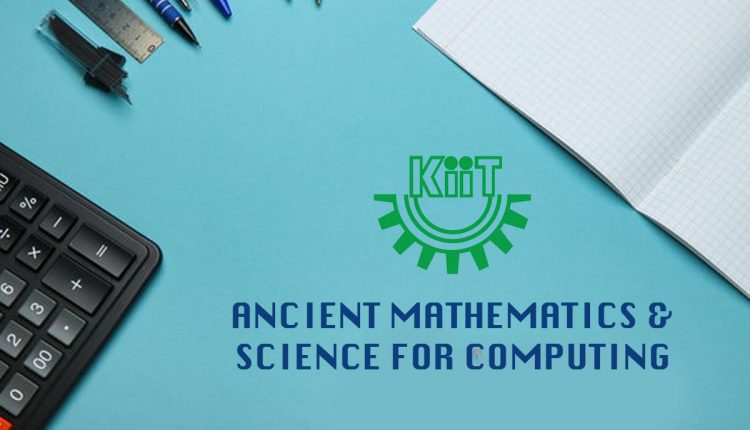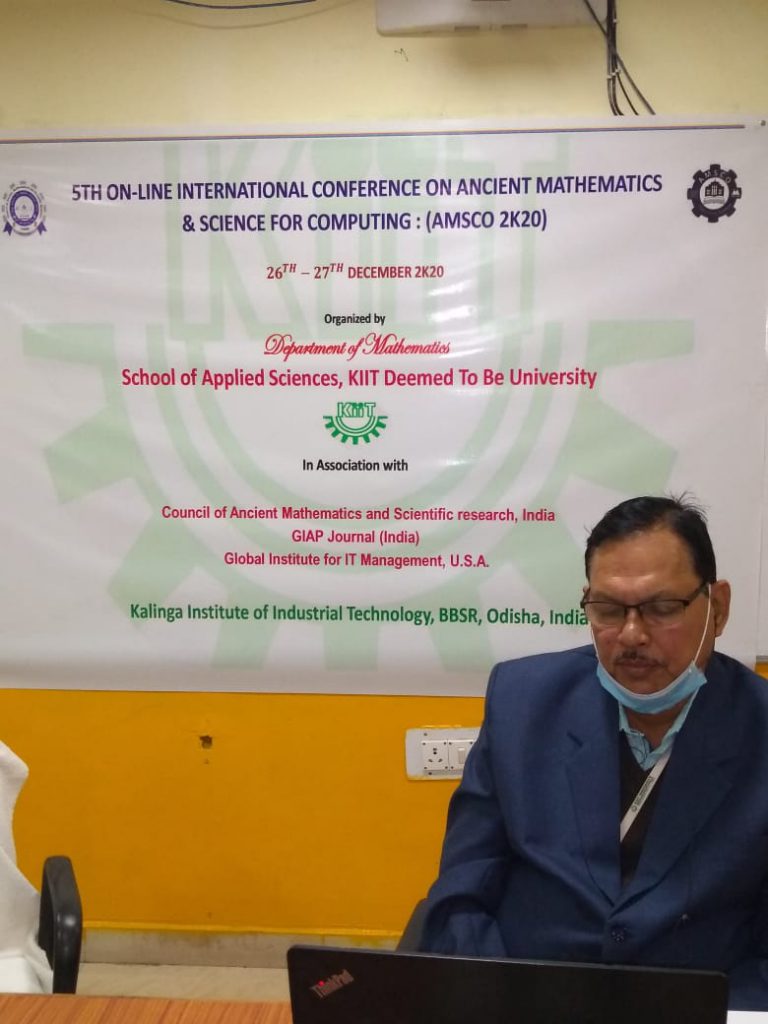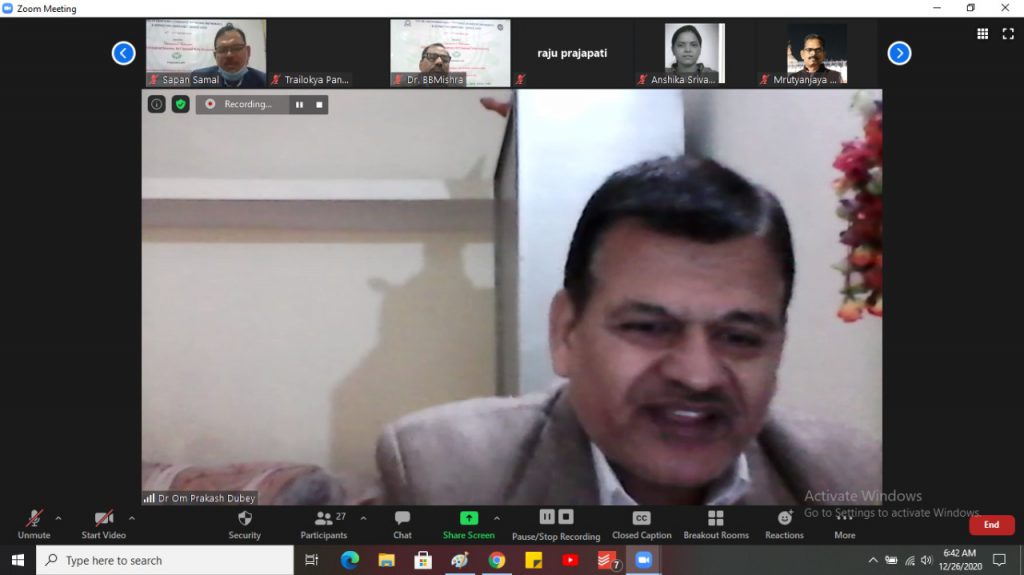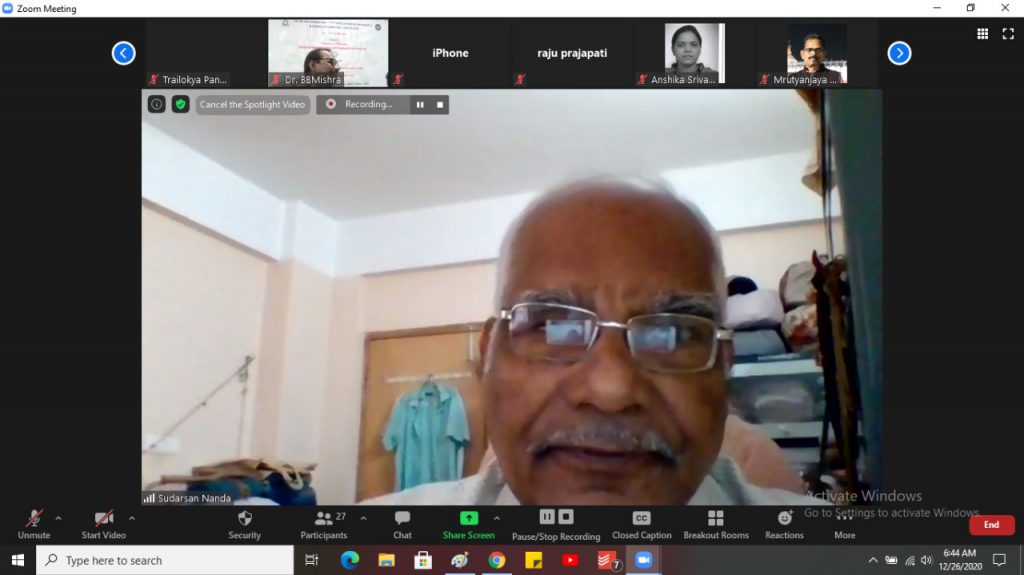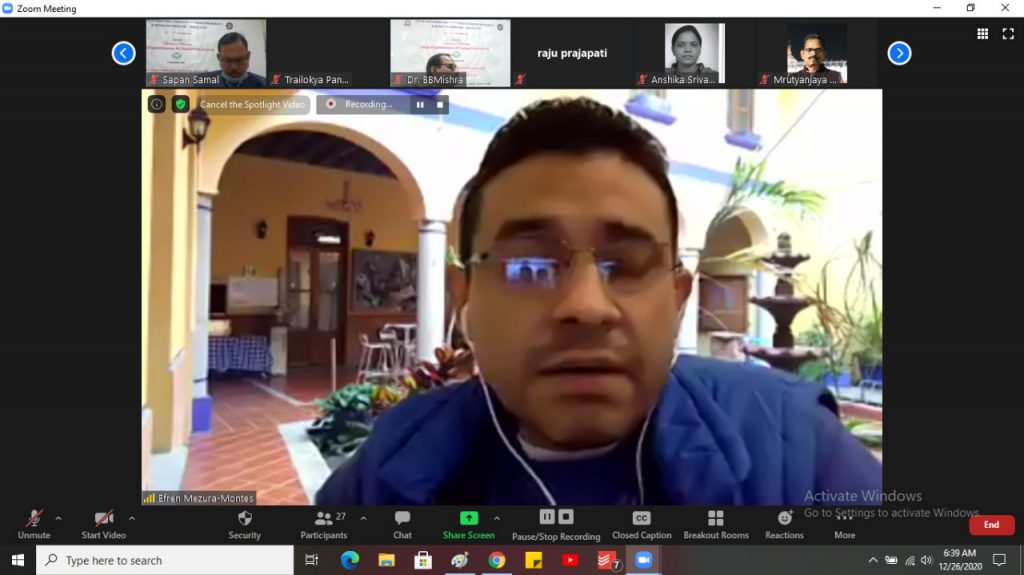5th Online International Conference on ‘Ancient Mathematics & Science for Computing’ at KIIT
The Department of Mathematics, KIIT Deemed to be University, in association with CAMSR, GIAP journals and Global Institute for IT Management, USA, organized the 5th Online International Conference on ‘Ancient Mathematics & Science for Computing (AMSCO-2k20)’ on 26th -27th December 2020.
The objective of the conference is to provide ample opportunity to the budding researchers to express and exchange their ideas through paper presentations. At the opening ceremony, the objective of the conference was well explained by Prof. Om Prakash Dubey, General Chair & Convener AMSCO; Prof. Pramod K. Das, Emeritus Professor; Prof. Sapan K. Samal, Coordinator AMSCO; Dr. Satya K. Mishra, Nodal Chair AMSCO from Dept. of Mathematics, KIIT; Prof. Shailaja Shukla, Vice-President and Prof. Efren Mezura Montes, Chief Advisor, CAMSR & AMSCO to the delegates joining from India and abroad.
The Chief Guest, Prof. Sudarsan Nanda, Professor of Eminence-cum-Research Chair, KIIT-DU enlightened the audience about ancient mathematics and the contributions of the ancient mathematicians like Aryabhatt, Barahamihir, Katyayan, etc. He informed that after the 14th century, Prof. Ramanujan was probably the only Indian mathematician, whom the whole world recognizes and also observes 22nd December of every year in his memory.
On the first day of the conference, Prof. P. K. Sahu, Associate Professor, BITS Pilani (Hyderabad Campus) delivered a keynote talk on “A Comparative study of warm holes in modified f(R, T) gravity and general relativity”. In his interesting and interactive talk, he also focused on white holes.
Participants from different parts of the world presented their papers. Mr. Raju Prajapati from Amity University, Ms. Neha Kumari from Chhattisgarh University, Mr. Nirakar Pradhan, Mr. Sidharth Mittra and Ms. Anwesha Mishra of KIIT Deemed to be University were some of the presenters.
The session of the 1st day concluded with a positive remark by Prof. S.K. Samal.


